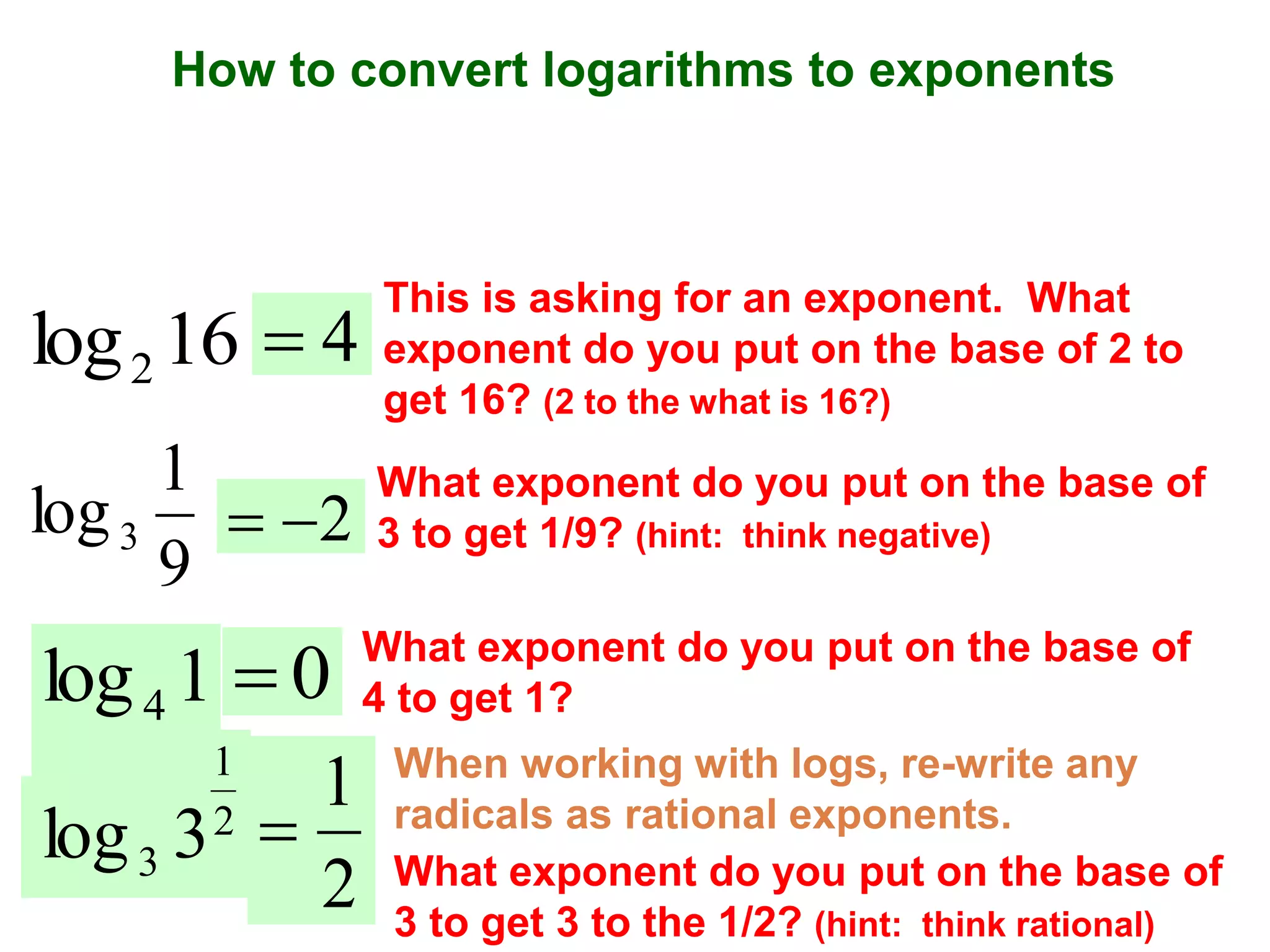The document discusses exponents and exponential functions. It begins by defining key terms like base, exponent, and exponential form. It then provides examples of how to write numbers in exponential form and evaluate expressions with positive, negative, and zero exponents. The document also discusses exponential growth, logarithmic functions, and their inverse relationships. Exponential functions have a constant rate of growth, while logarithmic functions are the inverse of exponential functions. Graphs of exponential functions increase rapidly, while logarithmic functions slowly increase.




































